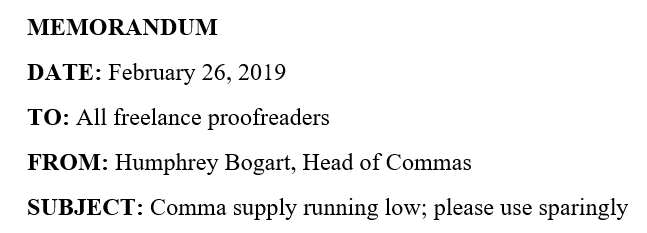
A memo (or memorandum) is a short document designed for internal communication. If you need to inform your employees or co-workers of something, for instance, you may need to write a business memo. But how does this work? In this post, we look at the basics.
A business memo should identify itself, so use the heading “MEMORANDUM” at the top. After that, you need to include four things:
So if we had to contact our proofreaders, our memo might begin:

The recipients will then be able to see whether it applies to them.
Begin your memo by clearly explaining why you are sending it. It is vital to get to the point quickly here, so focus on the most important details and save in-depth information for later.
The second – and probably longest – part of your memo will be a more detailed explanation of the subject of the memo. This may include:
Subscribe to our newsletter and get writing tips from our editors straight to your inbox.
Ideally, this should be no more than a paragraph or two. If you find you have a lot of information to communicate, you may need to write a full business report. However, you can use a memo to draw attention to a longer document (e.g., by attaching a file or including a URL).
End your memo with a brief closing statement. If applicable, this should include what you want the recipients to do in response to the memo (e.g., a course of action or submitting information). Alternatively, it can simply be a short summary of the key information from the memo.
Finally, we’ve created an example memorandum to show you what yours might look like. And don’t forget to ensure your memo is error free by having it checked by a professional proofreader.